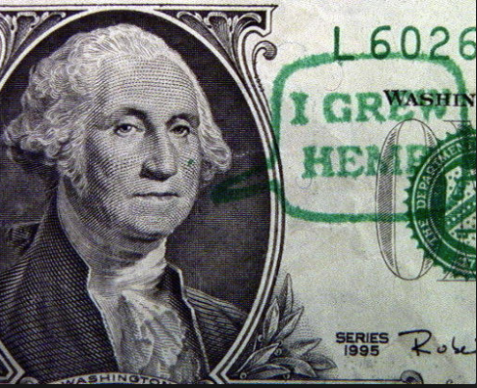Tucked away in the long-overdue 2014 farm bill that the president just signed burns the embers of a fire sweeping the nation.
The sparks of legalization of marijuana for “recreational” and medicinal purposes this time, however, have entered a new wood pile: that of agriculture.
This is not a statement for or against recreational use.
Industrial hemp, the non-drug cousin of the recreational drug marijuana, has the potential at least to become a viable commodity again in the U.S.
The language allows state departments of agriculture universities to legally begin research on hemp. These pilot projects must relate to the growth, cultivation, and marketing of hemp. The fact that it was included in the farm bill at all should be seen as a victory of sorts. Before the legislation, approval from the DEA was required.
It’s just the beginning of the process, points out Kentucky Commissioner of Agriculture James Comer.
Last year, Kentucky revived its long-dormant Industrial Hemp Commission and renewed the push to bring its use back, with state legislators citing its potential for economic renewal in the eastern part of the state where tobacco has departed. Hawaii made the growing of industrial hemp legal last year and has been waiting on the OK from the federal government, which the DEA had refused because of the ban on marijuana. One Colorado chef harvested the first legal industrial hemp crop in more than five decades last fall, following legalization of marijuana there last year.
Kentucky has a long history of industrial hemp production, as does the U.S.
Look back in our history and you’ll see names associated with the crop you might not otherwise think. George Washington and Thomas Jefferson were known hemp growers. It’s reported that they may have even smoked some of the flowers and remarked about the more-potent “marijuana” being worth more than the industrial uses. James Madison reportedly got inspiration for the documents that founded the government while smoking hemp’s cousin “marijuana.”
But, industrial purposes were the driver that made Kentucky the top grower of hemp in the early 1800s up until shortly before the “War,” (that’s the “Civil War.”) Peak production occurred in 1850. Federal legislation in 1938 outlawed production of cannabis, including hemp, until the U.S. ramped up production during World War II. At the end of the war, production of hemp soon fell again. There’s always been a push to bring it back.
Hemp can be used as food, oil, clothing, animal bedding, and rope just to name a few of its uses. Ever so often an old, long-forgotten crop will receive new attention about its potential.
I would hope that the production of industrial hemp would help solve the economic woes of the rural areas of Kentucky and elsewhere. One very notable Kentuckian would passionately agree. Actor Woody Harrelson has been a hemp advocate since the 90s, and you can learn more about his activism here.
For more background history on hemp in the U.S. I’d like to reccommend checking Farm Collector’s article, “The Forgotten History of Hemp Culture in America”.
Maybe it will give new meaning to the old song, “Kentucky, you are the dearest land outside of heaven to me”—perhaps in more ways than one.




